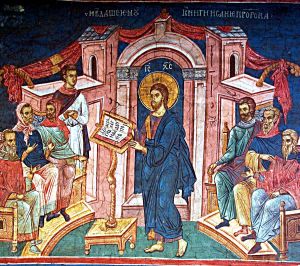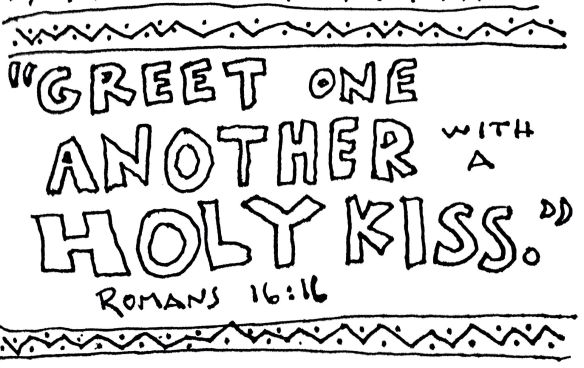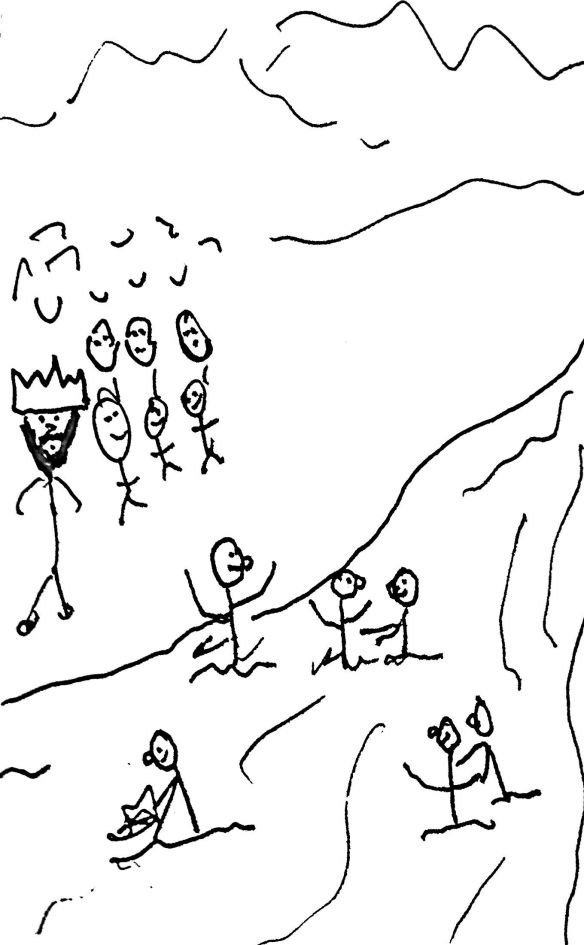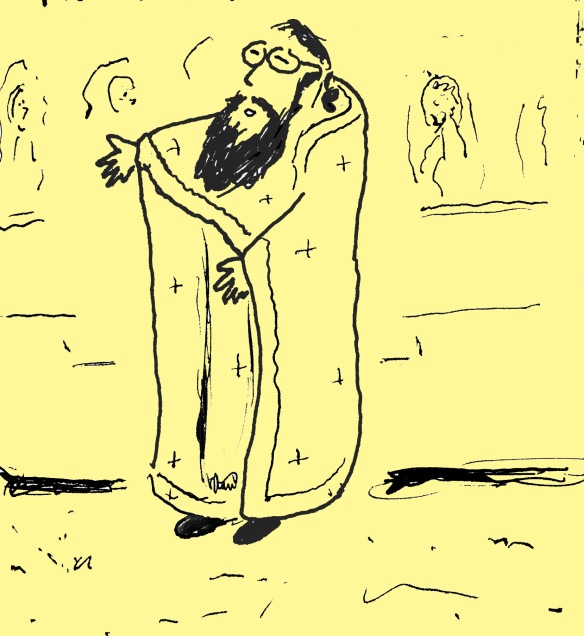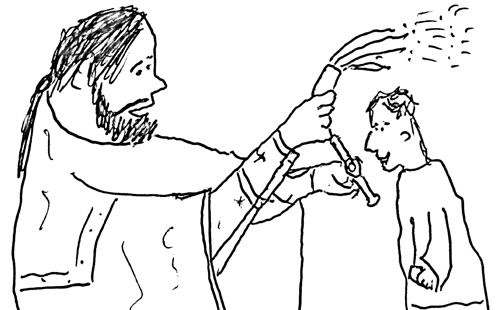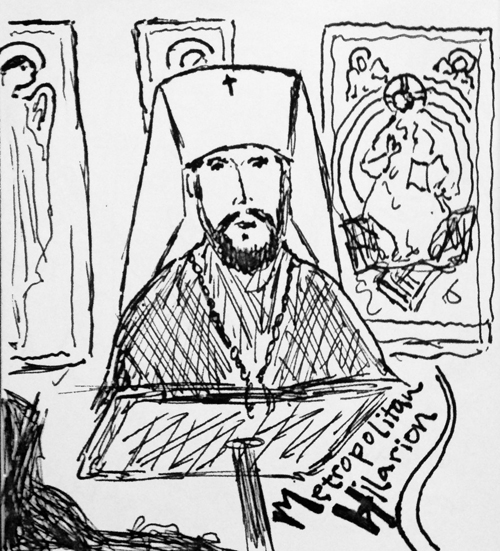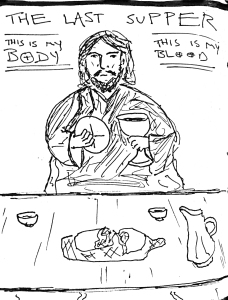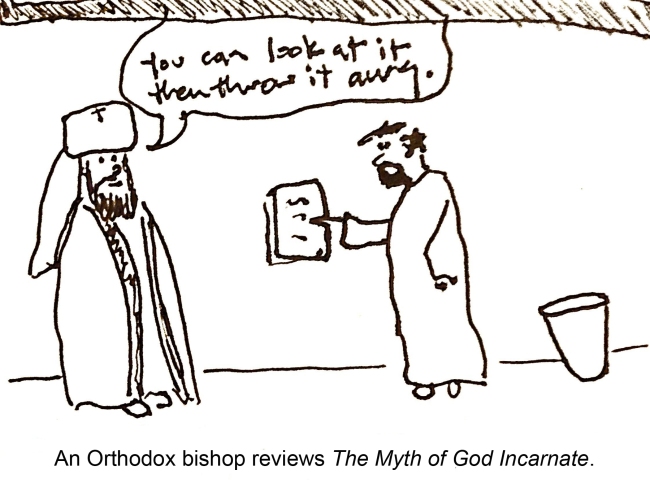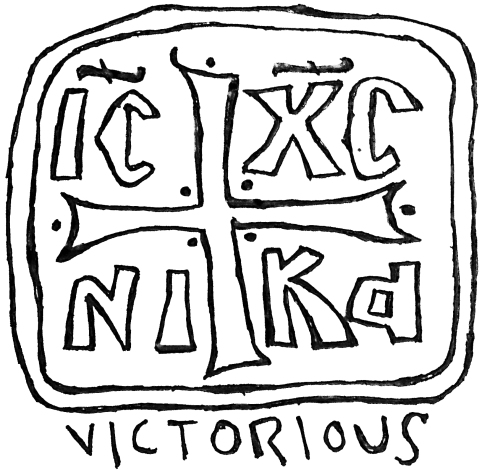[Note: This is a repost from an AncientFaith.com blog that is no longer online. What follows was originally published February 2014 and subsequently has been lightly revised. If you find any errors or dead links, please shoot me an email. This post is a bit outside the usual material for this site, but as we ramp up to start putting more content online here, it seems reasonable to go ahead and archive it here. The content here is based on my current knowledge and experience, and is no substitute for health advice from a doctor or spiritual advice from clergy.]
By Jamey Bennett
During my first Orthodox Lent, my cradle Orthodox friend Joe Bush remarked (probably over hummus): “Lent’s funny, you know. When I was growing up, my aunts all gained weight during Lent.”
And he’s unfortunately right—for many of us, we make up for the meat, eggs, and dairy with a heavy load of grains, soy products, and unhealthy faux-meats, while our waistlines suffer the consequences.
But it doesn’t have to be this way. We can follow the Orthodox fasting standards and still nourish our bodies.
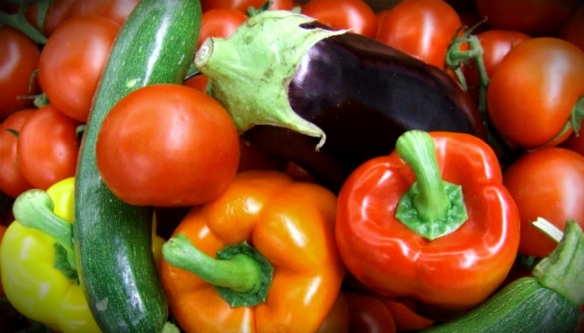
For those who know me, it’s no secret that I adopted a “Paleo” or “Primal” eating strategy in 2013, shed forty pounds in short order, and lowered my blood pressure—all while traveling across several states, through dozens of cities, and one U.S. territory. These results have elicited many questions and comments from both friends and family, and as Great Lent draws near, I am often asked how to reconcile the two paths of fasting for spiritual benefit and following a Paleo diet for the sake of good health. (And before I really get going, let me be clear: I am not trying to convert you to “be Paleo,” nor am I trying to stand in the place of your priest or doctor. We must remember our fasting is an ascetical discipline closely connected to our fellowship with each other and God in the Eucharist. Paleo is an eating strategy for health.)
Let’s review the don’ts, and I’ll paint with a fairly broad brush.
Orthodox fast days generally exclude olive oil, wine, and animal products like dairy, eggs, and meat (shellfish is allowed, along with bony fish on other days). Some people opt to wait until 3 pm to eat their primary meal on each fast day, but that’s probably not the typical approach. Orthodox fasting is on a spectrum—some will take wine to mean all alcohol, or olive oil to mean all oils, and a few will eat fish throughout the fast. And some days on the calendar are simply more relaxed than others.
The Paleo diet is also on a spectrum. Really, it might be better to speak of “paleo diets.” Generally, it excludes legumes (beans, peanuts, peas, soy, etc.), grains (corn, wheat, bread, sometimes rice, etc.), processed oils (soybean, canola, etc.), most or all refined or added sugars, most or all dairy, and tends to go easy on high-sugar fruits, starchy vegetables, and in many cases, tubers (like potatoes). Exceptions abound, and athletic Paleo folks may emphasize resistant starches more than others, and some folks leave off nightshades for other reasons. Positively, many Paleo-type diets emphasizes eating on the lower carbohydrate end of things (at least compared to most modern diets), with little or no fear of healthy fats—usually from animal sources, certain plants (like avocados or nuts), and healthy oils (like coconut or olive oil—choose your olive oil carefully). Organ meats and shellfish may be encouraged, and a wide variety of fruits and vegetables round out this sort of plan. The basic idea is lots of plants and animals, often closely aligned to their whole and natural state.
So how does one navigate both Lenten guidelines and the Paleo lifestyle?
1. Focus on healthy fruits, vegetables, nuts, and allowed oils as the platform of your diet.
Vegetables, lower-sugar fruits, and perhaps potatoes are the core nourishment during this fasting period, providing you with an essential, nutritious foundation. The ANDI Guide (Aggregate Nutrient Density Index) is an imperfect, but helpful resource to help you find the most nutrient-dense vegetables, herbs, and fruits. Kale, basil, cilantro, cranberries, strawberries, carrots, and spinach are all great choices. Try adding fermented foods to your diet, too, such as a few forkfuls of sauerkraut or kimchi with a meal or two a day.
I like to eat a lot of leafy green salads, and I always feel my best when I have one big salad every day (and it can easily be thrown together in just two minutes). Unfortunately, most commercial salad dressings are full of yucky stuff. Try vinegars with avocado oil, make your own, or look for brands like Walden Farms, Primal Kitchen, Bragg’s, or Tessemae’s, all of which have salad dressings that avoid harmful industrial oils.
Make babaganoush with avocado oil instead of olive oil; make hummus with mac nuts instead of chick peas; or take the time to soak the chick peas before whipping up a batch, or even try to find an oil-free hummus; in some dishes you can even let cauliflower stand in for rice (or if you aren’t watching carbs, go ahead and use white rice), and many grocery stores now carry cauliflower rice in the frozen section.
Some Paleo diets emphasize fat over carbohydrate, and protein suggestions vary. Consider stocking up on coconut or avocado oils, buy fresh avocados regularly, and pick up some nuts. These are good, rich, and healthy fats—crucial fuel to keep you going through the day. Healthy fats may help alleviate your appetite, give you fuel, and help stabilize energy levels. That said, don’t go too nuts with nuts, probably avoid peanuts altogether, and beware of nuts roasted in seed oils. Consider trying a bit of coconut oil in your coffee for a satiating morning boost.
If you feel like you must have noodles, look into shirataki noodles for a low-carb and gluten-free alternative to wheat or rice-based noodles. You won’t get much nutrition out of shirataki, but it’s a traditional Japanese noodle, pretty harmless, and is great for, ahem, “encouraging” digestion. Consider something like Miracle Noodle as a source, or a similar, non-soy-based shirataki noodle (there are several soy-based impostors on the market). Miracle Noodle even makes a no-carb “rice” that is plenty edible.
2. Focus on getting your protein from shellfish and plants.
The biggest concern vegans, vegetarians, and Orthodox fasters hear is whether or not one can get enough protein on a plant-based diet. The typical go-to plant-based proteins are beans and other legumes, but it is ideal to soak and/or sprout them first to reduce or neutralize some of the anti-nutrients present. Few do this regularly, and so for most, it’s a no-go, but for some, it may be okay. Tempeh is one possibility—while it is soy, the fermentation process for tempeh makes it a slightly better choice than tofu (but other options are available).
Almonds, broccoli, and spinach contain plant-based protein, even if it’s not very much. Take the time to browse the Internet for protein content in non-legume vegetables so you can make an informed decision at the market.
Even better, go for shellfish, as the Orthodox fasting guidelines are generally understood to permit crustaceans and shellfish throughout Great Lent. Oysters, clams, shrimp, mussels, scallops, and other shellfish are all wonderful sources of protein. One of the principles of many Paleo diets is “eating the animal from nose to tail.” My friend David McGee put it this way:
Those shellfish are roughly equivalent to organ meats of larger animals in their nutrients, and you are eating the whole animal, both plusses. Lots of Paleo diets will emphasize grass-fed meat, but don’t go into detail, so people go for the steak and skip the liver/organs, missing out on the most nutrient dense parts. Oysters, mussels, etc., are very nutrient dense, have the right kind of healthy fats, and may end up being better than the meat you would have picked in a fast-free period. Also, you can eat some of the shellfish raw or minimally prepared, which will preserve the nutrients that cooking can destroy in other meats you may be less inclined to eat raw.
Mussels, for example, are tasty, cheap, ethical, and contain plenty heart-healthy omega-3s. I can get them by the pound, frozen, for about the same price as chicken, for example, and you can play around with cooking them in delicious vegan sauces.
If you’re still concerned about protein beyond these suggestions, you may consider looking for a plant-based/vegan, gluten-free, low-glycemic protein supplement to imbibe once or twice a day. Either that, or turn to worms and insects. I like to eat cricket-based Exo protein meal bars, and even had a meal bar monthly subscription for a time.
But seriously:
3. You’re probably not going to die if you miss out on optimal protein for a few weeks.
Our bodies are extremely adaptable. Most healthy people can go without protein for a while. You will feel different, but you can probably do it. We come from people who went days or weeks on end without eating animals. They didn’t starve—they just ate more plants. Intermittent fasting is part of our genetic make-up. The Orthodox fasting rules are “Paleo gold,” really. Embrace your ancestral roots and eat a little less.
As the Whole30 dietary reset famously put it:
It is not hard. Don’t you dare tell us this is hard. Beating cancer is hard. Birthing a baby is hard. Losing a parent is hard.
Going without as much protein? This “hard” demon is driven away only by prayer and fasting.
4. Finally, focus on the benefits of intermittent fasting.
As noted above, an important concept in the Paleo community is the concept of intermittent fasting. If we are going to emulate our ancestors, as the thinking goes, this may involve both food choices and food absences. We all descend from people who went days or weeks without eating, or at least without eating animals. Intermittent fasting is part of our genetic make-up, and it is part of the Orthodox tradition. (I.F. may be a little more challenging for women.)
Many in the Paleo community have adopted strategies like randomizing meal times, fasting for a number of hours, or a compressed eating window, to mimic this aspect of our genetic heritage. And considering we partially fast 180–200 days a year in our Orthodox tradition, well, I’d say that the Orthodox fasting rules naturally fall in line with this sort of thinking.
We don’t always have to eat, and our tradition teaches us to leave off meals sometimes, and pretty regularly. I say, let’s do it.
Final Thoughts
You may have noticed that this Paleo way of eating appears to completely omit wheat-based bread. Of course, as Orthodox Christians, we should not omit the Bread of Life. If you’re following these dietary principles, apart from allergies, there is no obvious dietary reason to forego reception of communion, and, for most, a little blessed bread on top of it is just fine.
Proceed with humility and repentance, and don’t get uptight at coffee hour, or at anyone’s house. As they say, “Keep your eyes on your own plate.” Don’t miss any great experiences, and don’t ruffle anyone’s feathers.
The canons, principles, and rubrics of the Church as they currently exist are entirely compatible with a nutritious, dairy-free, and mostly grain-free lifestyle.
Relax. Don’t worry. Eat Lenten and stay Paleo.
– – –
There are a number of helpful resources available for eating vegan/vegetarian and for optimal nutrition. I can’t endorse all content in the links above or below, but all of them are helpful for one reason or another.
Orthodox Resources
- Check out my recorded interview on AFR about fasting and healthy eating.
- Ancient Faith Radio’s Food, Faith, and Fasting: Ancient Ingredients for Modern-Day Health
- How to Eat Well During an Orthodox Lent (not necessarily Paleo, but quite thorough)
- Nourishing Our Bodies During Lent – How to Navigate the Campus Dining Hall
- The Great Fast: Orthodoxy, Lent and Real Food (web archive)
- Mystagogy Fasting Resource Page
Vegan or Vegetarian Paleo Resources
- Against All Grain (Vegan Archive)
- Lent Means No Meat! What’s a Paleo Girl to Do?
- Paleo Veganista
- The Simple Veganista (not entirely gluten-free, but plenty to sort through)
- A Vegan Take on the Paleo Diet
- Vegie Head Paleo Recipes
- How to Follow the Paleo Diet without Eating a Single Piece of Meat
- Go Vegan Paleo
- Gluten Free, Paleo, and Vegan: 12 Diet-Friendly Dinner Recipes Everyone Can Eat
- Paleo Nutrition for Vegetarians
- The Whole9 Shopping List for Vegetarians and Vegans
- Vegan Paleo Cookbook
- Vegetarian Paleo Cookbook
- Vegetarian Paleo Recipes
Other Related Material
- Can a Christian Follow a Paleo Low-Carb Diet?
- Can Christians Be Paleo? Christianity, Faith, Evidence, Dobzhansky, Evolution, and More
Just for Fun
- Wax Worm tacos (worms and insects are a great source of protein)
Suggested Foods
Sometimes it’s more helpful to put the emphasis on what foods are available, rather than what is forbidden. I remember a Lent a few years ago where I caved and ate a lot of fried chicken because I spent all my time pondering fried chicken as “forbidden fruit.” Here is a handy list of fast-friendly foods, full of nutritional benefits.

